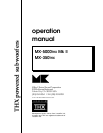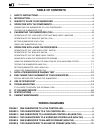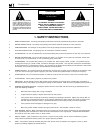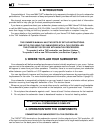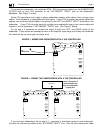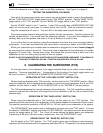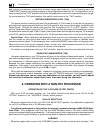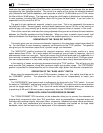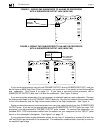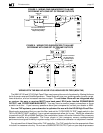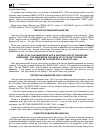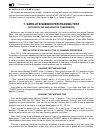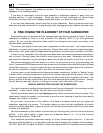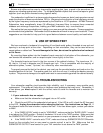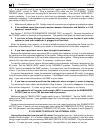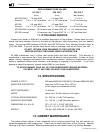
THX subwoofers page 13
output. When this happens, the midbass is cancelled. Re-do this test any time you move any of your
speakers or the listening position.
If you want to experiment, move the main speakers or subwoofer towards or away from your
listening position, in small increments. When you hear the best combination of stereo image
localization and focus with solid midbass impact and output, you have the ideal location.
If you have two subwoofers, perform one test for each subwoofer. When you perform each test,
make sure the other subwoofer is not operating by either unplugging its input cable or its power cord.
8. FINE-TUNING THE PLACEMENT OF YOUR SUBWOOFER
Experimenting with the placement of the subwoofer can significantly improve its sound. Once the
subwoofer is hooked up, listen to it with a familiar CD, Laserdisc, DVD, LP, etc. with good bass
content. As you move the subwoofer, listen carefully for changes in the amount and quality of the
system's bass reproduction.
The amount and quality of bass you hear is dependent on the room itself. Low frequencies are
affected by a room's size and type of construction. Rooms differ when it comes to reproducing bass,
and in every room, bass quality changes when the subwoofer is moved from one location to another.
A simple rule to remember is that you get more bass when you move the subwoofer towards any
wall or corner. Moving it away from a wall or corner gives you less bass. Remember that the floor
also loads the subwoofer, and that maximum bass is found with the woofer on the floor in a corner.
We recommend starting with the woofer in a corner (or very close to one), and proceeding from
there. Extensive MLSSA measurements have shown corner locations to be most likely to give the best
overall bass response. A corner location will give you maximum bass output and sonic excitement,
as well as a standard to compare with if you move the subwoofer around.
In some rooms, corner locations excite resonance modes, producing a "muddy" or "boomy" sound.
In these rooms, a location along a wall, away from the corner, may give the best results. Find a spot
where no single bass note overpowers the others and the overall sound is powerful and clean. You
want to achieve a smooth sound quality, with the entire bass spectrum equally prominent. Usually,
this will be along one wall, close to or directly in a corner, not in the center of the room.
SPECIAL METHOD FOR PLACING THE SUBWOOFER
If you are interested in getting the best possible sound from your subwoofer, this technique is often
successful. It may require, though, that you move some furniture around.
Place the subwoofer where your main listening position will be, and connect it to your system. Play
some music through the system, and then walk around the room, listening to how the sound quality
changes from location to location.
As you listen, concentrate on the quality of the bass in locations where you can place the
subwoofer, especially the corners. The location where you hear the best combination of smooth
response, exciting deep bass, impact and sock, with the least boominess should be the best place
to locate the subwoofer.
Move the subwoofer to that location, and continue your listening tests, now from the main listening
position. If the sound quality is good, leave the subwoofer where it is. If it is not, continue
experimenting as above. Good luck!
Your subwoofer generates tremendous energy, so it may vibrate objects close to it. If you hear
buzzing or vibrating objects, try moving the subwoofer and/or damping the vibration of those objects.
The THX "Wow" disc (Chapter 16, Side 2) contains test signals useful for locating buzzes and rattles.



